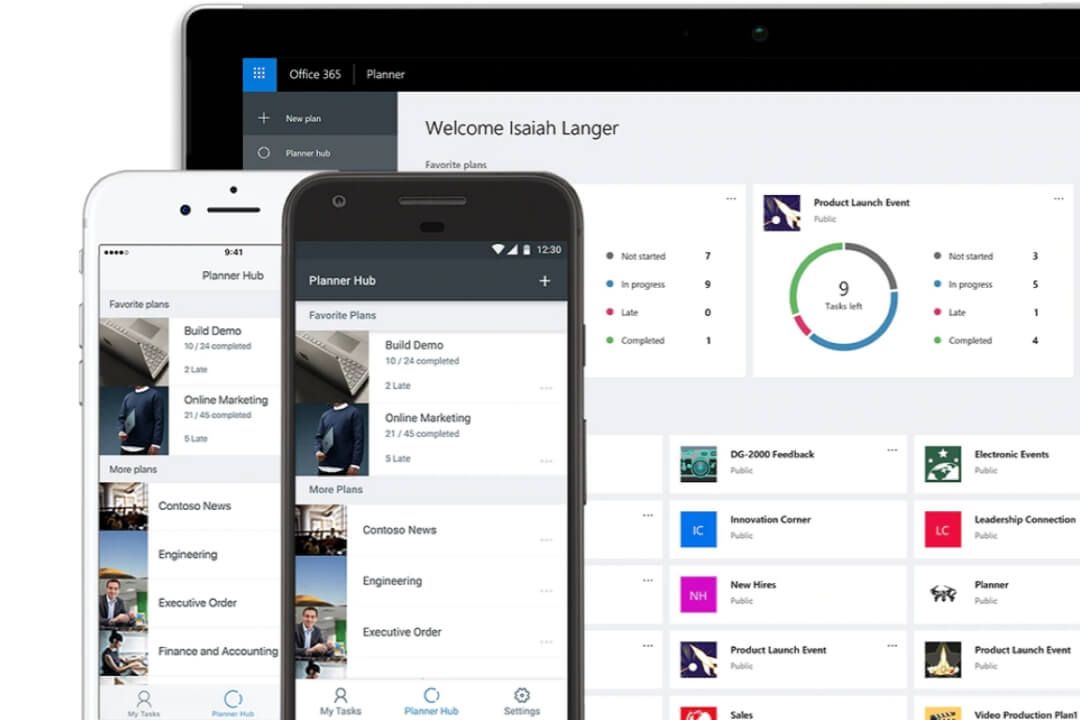

Microsoft Planner is a great collaboration tool based on the Kanban-like model.
#MS TEAMS PLANNER HOW TO#
Learn how to migrate Planner plan to new group or tenant. Planner is a great tool for task management. Sometimes it could be required to migrate Microsoft Planner in Office 365 to another tenant, group or team. In the 1 st instance, it’s important that we’ve already gotten our Planner plan set up, and once that is done, we can associate a single task in MS Project with a single Plan in Planner.Microsoft 365 atWork partners with AFI.AI, the developer of modern data protection platform built from the ground up to deliver a fully-fidelity backup for MICROSOFT 365 and GOOGLE WORKSPACE.

Now that we’ve used planner to define and track our tasks, we can begin to see that it’s a useful tool for task management, but it’s limited by design in terms of resource management and dependencies between tasks. Choose Progress for a more granular progress view.Hover over a task to set it as completed (the task will be hidden from the view).To be a little more granular, one can change the board view to display by progress and begin to drag tasks into the correct progress stage. If you want to set a task as completed, simply hover over it and click the “complete task” button. Let’s deal with tasks that are completed first. It’s a single click to mark a task as completed, and a simple “drag” to move a task from Not Started to In Progress. A great way to do this is in a team meeting, and since planner is an internet tool, it’s great for managing virtual teams! Let’s assume you’ve fully completed a few tasks, and want to mark some others as started.
#MS TEAMS PLANNER UPDATE#
In addition to users updating their tasks with Outlook, as we saw above, the plan owner can also update any task. It’s also possible to update a task and then manually send an email to the user. Office 365 Enterprise E1, E3, E4, and E5.Planner is available in the following plans: Planner is an O365 application accessed from the Waffle when you’ve logged into Office 365. Now that we know what Planner is and where it fits into the Microsoft ecosystem, let’s get started with some how to’s and best practices. Planner neatly fills the gap between a personal task management system (Microsoft To Do / Wunderlist) and an Enterprise Project Management System ( Microsoft Project Online with MS Project). That’s out of the scope of task management! Task ownership is pretty easy to define, but because Planner is focused on teamwork, it’s important to be able to collaborate with one or multiple teams. What I’m not concerned about is the work or effort required to do the task. Note that whilst you can have unlimited buckets, you are limited to six labels per Plan. Of course, you might not use any of those I listed, but other categories that could be applicable are department, priority, etc. It’s worth thinking about what your buckets and labels might be. Planner allows us to display tasks on a “board” in either bucket or by one of a selection of criteria, such as start date, due date, progress (not started, in progress, completed), or other user-defined labels. In fact, Planner already has these three states built in for tracking progress. I might actually go a little further and define progress on tasks as one of three states: not started, in progress, or completed. When I talk about task management, I’m really concerned with whether a task has been completed or not, and who owns it. I want to drill into task management and task ownership a little and provide my own definitions and input into these items. This is the PM who requires task management and task ownership, hence the focus on teamwork. Whereas Ms Project is really aimed at the “serious” Project Manager, providing advanced functionality such as resource and schedule management, Planner is aimed at the more casual Project Manager. Microsoft Planner is an Office 365 application that is aimed at providing a simple, visual way to organize teamwork.
#MS TEAMS PLANNER SERIES#
This is the first part of a two part series on using Microsoft Planner. Project Portfolio Management (PPM) Training.Project Management Office (PMO) Training.Enterprise Project Management (EPM) Training.Project Management Certification Training.


 0 kommentar(er)
0 kommentar(er)
